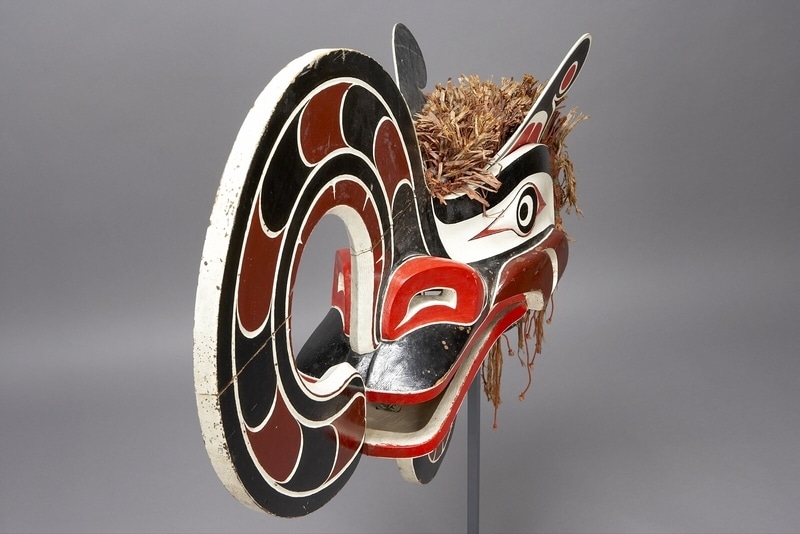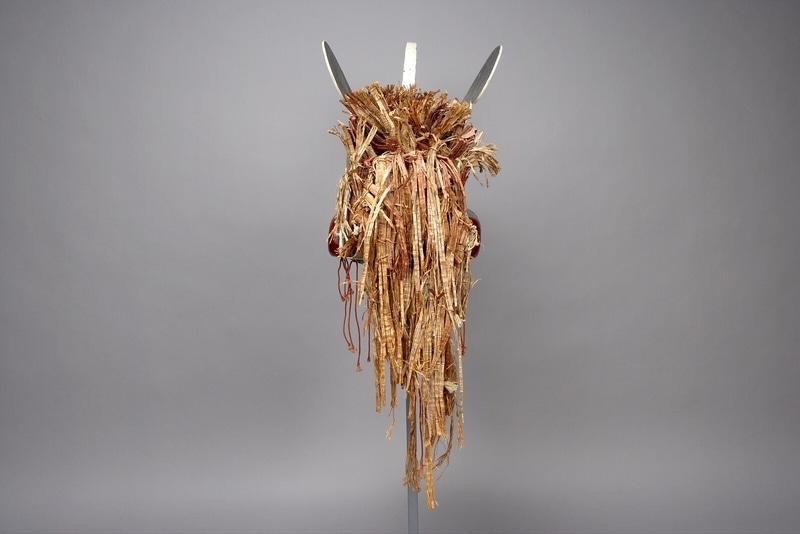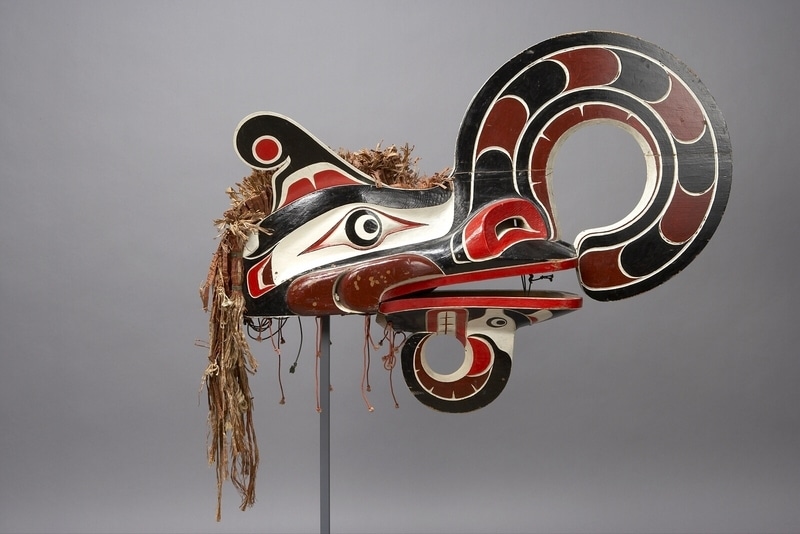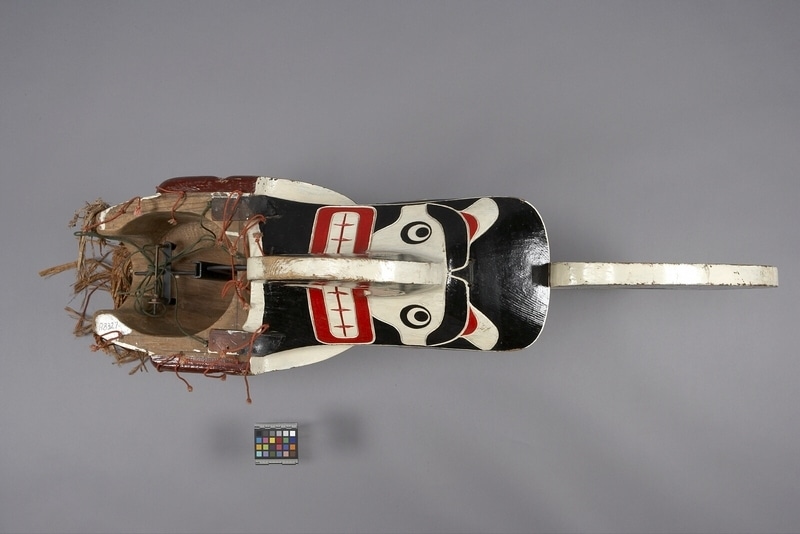Mask Item Number: A8327 from the MOA: University of British Columbia




Description
Carved wooden, crooked beak mask. The beak has red and white, ovoid shaped, cutout nostrils outlined in black and white. Running from the brow is a large, protruding, central black and white circular frill that projects upwards and curves downwards to the middle of the beak; detailed with repeating black and brown u-forms. The mouth is red, flat, wide and protruding. Behind the beak are two large, brown u-forms carved in relief. The underside of the beak is detailed with a bird figure with painted facial features and a circular beak that projects out then curves into the middle of the mouth. The bottom parts of the beak are hinged with rectangular pieces of leather. The eyes are black, outlined in white and red on a white ovoid shaped ground; the brow is black. Behind the eye are two red and white u-forms. The inside of the mask is hollow with the exception of pieces of fibre twine to articulate the beak. The top and sides have cedar braids and small bundles; longer strips hang down the back. Attached to the top are two triangular-like shaped ears with circular tips. The mask is painted black, white, red and brown with Northwest Coast stylized forms.
History Of Use
Crooked beak mask, made to be worn by a Hamatsa dancer.
Iconographic Meaning
Represents Crooked Beak of Heaven, Galugwadzawe', servant of Cannibal at the North End of the World, Baxbakwalanuksiwe'.
Narrative
Said to be the last Hamatsa mask carved by Willie Seaweed. Part of a collection of masks, whistles, etc. transfered at the time of Tom Hunt's marriage to Emma Moody. Tom Hunt gave a cash potlatch to Fort Rupert, Quatsino and Blunden Harbour people. Holm said the mask was made for the potlatch, about 20 years after their marriage. There was a controversy concerning the proper payment procedures for carving the mask, so the owner was advised to sell it as the transfer had been shamed. It was never used. See Holm's "Smoky-Top," page 120, where there is a photograph of the artist with the partially carved mask.
Item History
- Made by Willie Seaweed (Maker) in Blunden Harbour, British Columbia, Canada ? or Ba'as, British Columbia, Canada ? during 1954
- Collected in Fort Rupert, British Columbia, Canada and Tsaxis, British Columbia, Canada
- Owned by Chief Thomas Hunt before 1963
- Received from Chief Thomas Hunt (Seller) and H. R. MacMillan (Funding source) during 1963
What
Who
- Culture
- Kwakwaka'wakw
- Creator
- Willie Seaweed (Maker)
- Previous Owner
- Chief Thomas Hunt
- Received from
- Chief Thomas Hunt (Seller) and H. R. MacMillan (Funding source)
Where
- Holding Institution
- MOA: University of British Columbia
- Made in
- Blunden Harbour, British Columbia, Canada ? or Ba'as, British Columbia, Canada ?
- Collected in
- Fort Rupert, British Columbia, Canada and Tsaxis, British Columbia, Canada
When
- Creation Date
- during 1954
- Ownership Date
- before 1963
- Acquisition Date
- during 1963
Other
- Condition
- good
- Current Location
- Case 22
- Accession Number
- 2040/0001